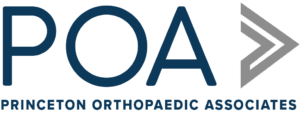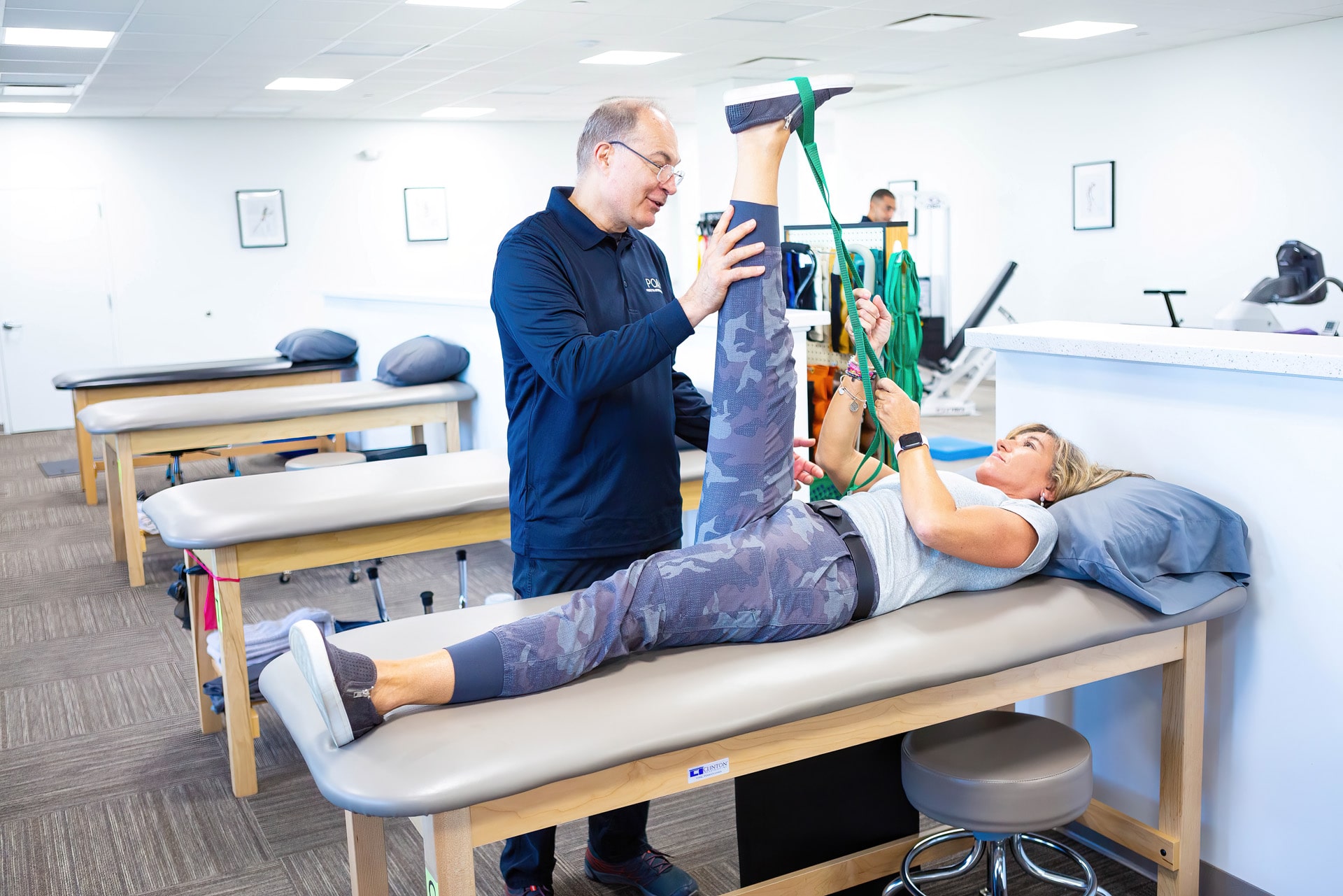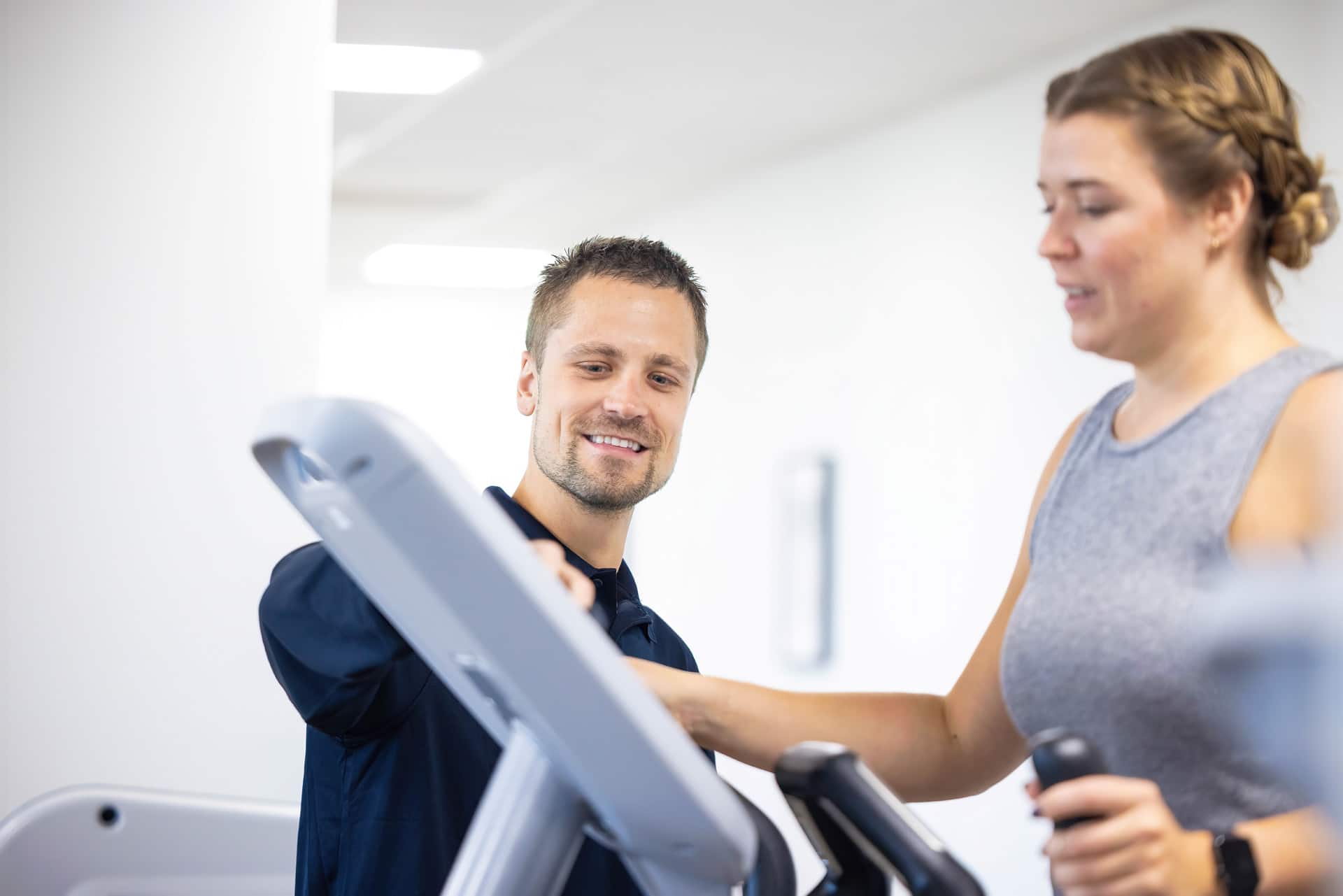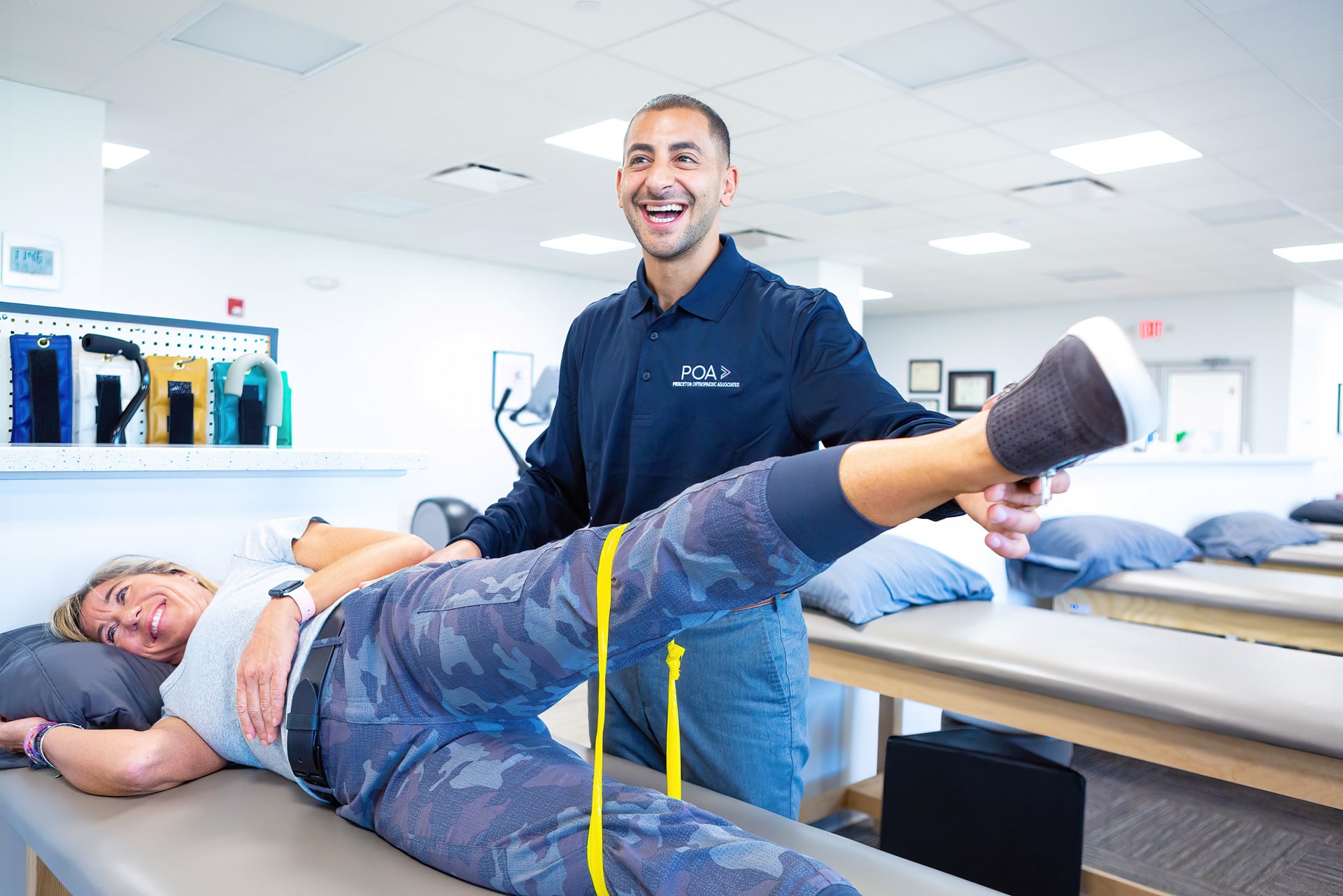
Physician Assistants
Physical & Occupational Therapists
KneeMRI ScansNon-OperativePhysiatry
Physical Therapy
Podiatry
Spine
Sports Medicine
TraumaUrgent Care
X-Ray Imaging

Muscle strains are a pretty common orthopaedic condition. You’re likely going to experience muscle strain during your lifetime.
Muscle strains can result from overexertion or sudden movements, often when the muscle is either stretched too far or injured by a direct blow. Or, as you get older, they can be caused by simply getting out of bed (haha!)
Muscle strains are also more likely to occur in individuals who lack flexibility or strength due to advancing age, inactivity, injury, or other health-related issues. Here are some tips for treating muscle strain and getting back into shape!
When you have a muscle strain, you’ll know it. It hurts. You may experience pain, tenderness, spasms, and limited movement. Other common signs include bruising, swelling, warmth over the site of injury, or abnormal skin coloration.
Muscle strains are typically caused by sudden, unanticipated movements or overexertion of the muscle. How muscle strains occur are usually associated with an active lifestyle–which is great!–but they can dampen your enthusiasm for what you’re doing to stay in shape. Muscle strains can result from overuse, stretching a muscle too far, or being hit with an unexpected blow. Muscle strains are more likely to occur in individuals who lack flexibility or strength due to advancing age, inactivity, injury, or other health-related issues. That’s why practices like active stretching or pilates are essential for prevention.
Thankfully, not all strains require a trip to the doctor, but you should take them seriously and let us help you. If the pain or discomfort lasts longer than a couple of days or you notice severe bruising or discoloration, we recommend you come in. We’ll be able to pinpoint the problems and even figure out whether the problem is something severe, such as a ruptured or torn ligament.
The best way to treat muscle strain is to apply a brace to the injured area and take anti-inflammatory medication like ibuprofen or naproxen. Applying an ice pack to the injury for 15 minutes can also help reduce inflammation, relieve pain, and speed up recovery.
Unless otherwise indicated by a physician, you should avoid using heat on the injured area to prevent tissue damage and promote healing. You should also avoid stretching or massaging the injured area, which could worsen the tear. Keeping your leg elevated for as long as possible after you have sustained a muscle strain will also help reduce swelling and decrease pain. (Side note: You mustn't put weight on an injured leg until it has completely healed).
Here are some things you should do at home if you have a muscle strain:
One way you can treat a muscle strain is to use the RICE method. The acronym stands for Rest, Ice, Compression, and Elevation.
To follow the RICE method, you will need to rest your muscle strain. This means taking some time off from activities that put pressure on your injured area and resting it in a comfortable position. You should also apply an ice pack to the injury for 20 minutes at a time, every hour or so. Make sure not to apply pressure directly onto the injured area with the ice pack. Use a towel or cloth between your skin and the ice pack. Finally, use an elastic bandage or ace wrap to keep your injured area compressed.
If you experience a muscle strain, it is important to take care of the injury right away. Try some of these home remedies for muscle strain to help speed up the healing process:



The best way to rehabilitate muscle strains is to try out some rehabilitation exercises. Rehabilitation exercises are used to strengthen the muscles around the injured site and promote healing and prevent future injury. Some of the most common rehabilitation exercises include:
These rehab exercises are designed to help your body heal itself and get back into shape after an injury. Rehabilitative exercises also serve as a preventative measure, which means they can be beneficial in cases where a person has experienced previous injuries or has certain health conditions that make them prone to injuries.
Muscle strains are preventable with the proper methods. To prevent muscle strains, you should focus on increasing your flexibility and strength. You can do this by exercising regularly and stretching before you exercise. You should also avoid overexerting yourself, meaning that if you're getting a little tired or sore during a workout, it's time to stop and take a break.
Muscle injuries are one of the most common injuries in any athletic or physical activity. They are especially common in sports like soccer, rugby, and football. In this blog post, we’ve outlined the most effective ways to treat muscle strain. Depending on the severity of the injury, you should seek medical attention. In the meantime, you can use the RICE method to relieve any pain and swelling. Home remedies like ice baths and cold packs can also be helpful in your recovery process.
The best thing you can do is take preventative measures to avoid getting muscle strain in the first place. Avoiding heavy lifting and stretching before and after workouts is a great way to start.

© 2023 Princeton Orthopaedic Associates. The contents of princetonorthopaedic.com are licensed under a Creative Commons Attribution-NonCommercial 4.0 International License. Copying without permission is strictly forbidden.